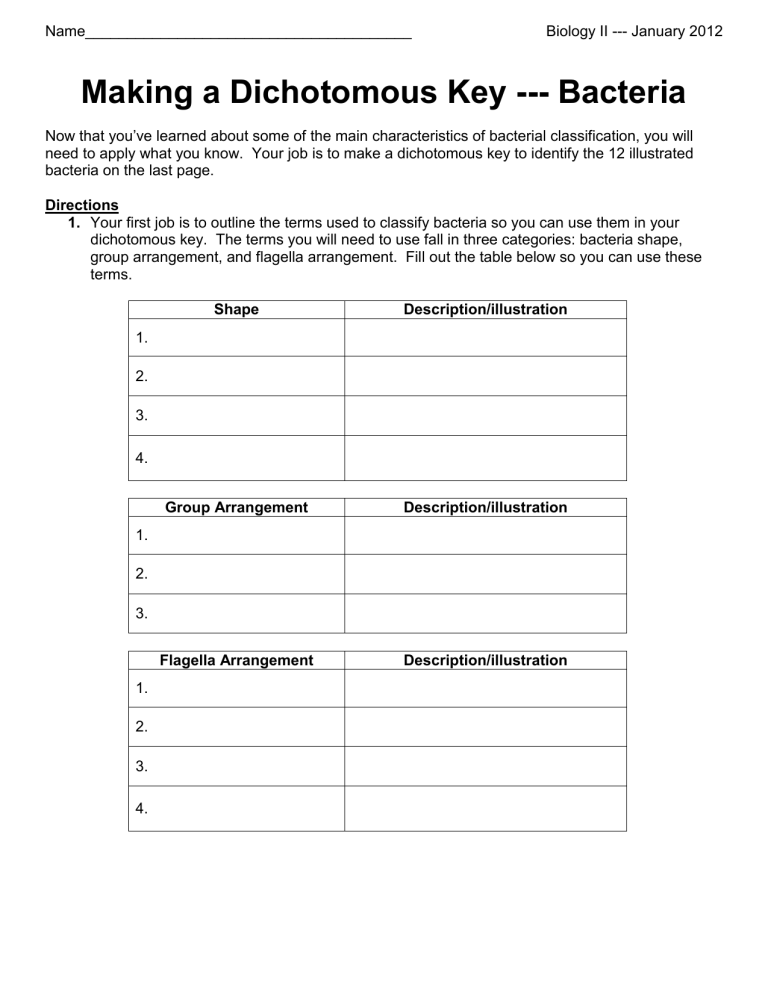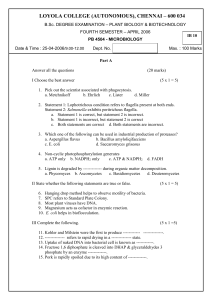
Name_______________________________________ Biology II --- January 2012 Making a Dichotomous Key --- Bacteria Now that you’ve learned about some of the main characteristics of bacterial classification, you will need to apply what you know. Your job is to make a dichotomous key to identify the 12 illustrated bacteria on the last page. Directions 1. Your first job is to outline the terms used to classify bacteria so you can use them in your dichotomous key. The terms you will need to use fall in three categories: bacteria shape, group arrangement, and flagella arrangement. Fill out the table below so you can use these terms. Shape Description/illustration Group Arrangement Description/illustration Flagella Arrangement Description/illustration 1. 2. 3. 4. 1. 2. 3. 1. 2. 3. 4. 2. Now that you know what terms you’ll be using, apply them to the illustrated bacteria in the chart on the last page. (Translation: use the terms to NAME THE BACTERIA!) A. G. B. H. C. I. D. J. E. K. F. L. 3. Now that you have your names, proceed by making a dichotomous key to identify the named organisms. Use the terminology from the first page (e.g. bacteria shaped like a bacillus with lophotrichous flagella arrangement) to differentiate between the illustrated bacteria. To do this, you will need to apply terminology as well as your own imagination. Be creative! The dichotomous key you come up with may be very different from the one your neighbor comes up with…your key might be shorter or longer than others…there ISN’T ONE RIGHT WAY! You can add or even subtract from the number of spaces I’ve provided you on the blank dichotomous key on the next page. 4. IMPORTANT TIP: MAKE A DIAGRAM!!! Start by listing ALL bacteria (you can use just their letters). Next, decide what characteristic (or decision) you’ll use to divide all listed organisms into two groups. Use the following as an example to get you started: Now that you have a “decision tree” that completely outlines all bacteria and identifies them all, you can apply A, B, F the decision tree to your dichotomous key. Each decision should represent a separate STEP in your key (in our A, B, C, D, E, F example, 1A would say “Have flagella” and 1B would say “Don’t have flagella.” The direction for Step 1A would be C, D, E Don’t have flagella “Go to 2,” while the instruction for 1B should be left blank until you know what step to go to. 5. The best advice I can give is to just start working and to… Have flagella USE A PENCIL . 1 A B 2 A B 3 A B 4 A B 5 A B 6 A B 7 A B 8 A B Go to 2 A B B C D E F G H I J K L


